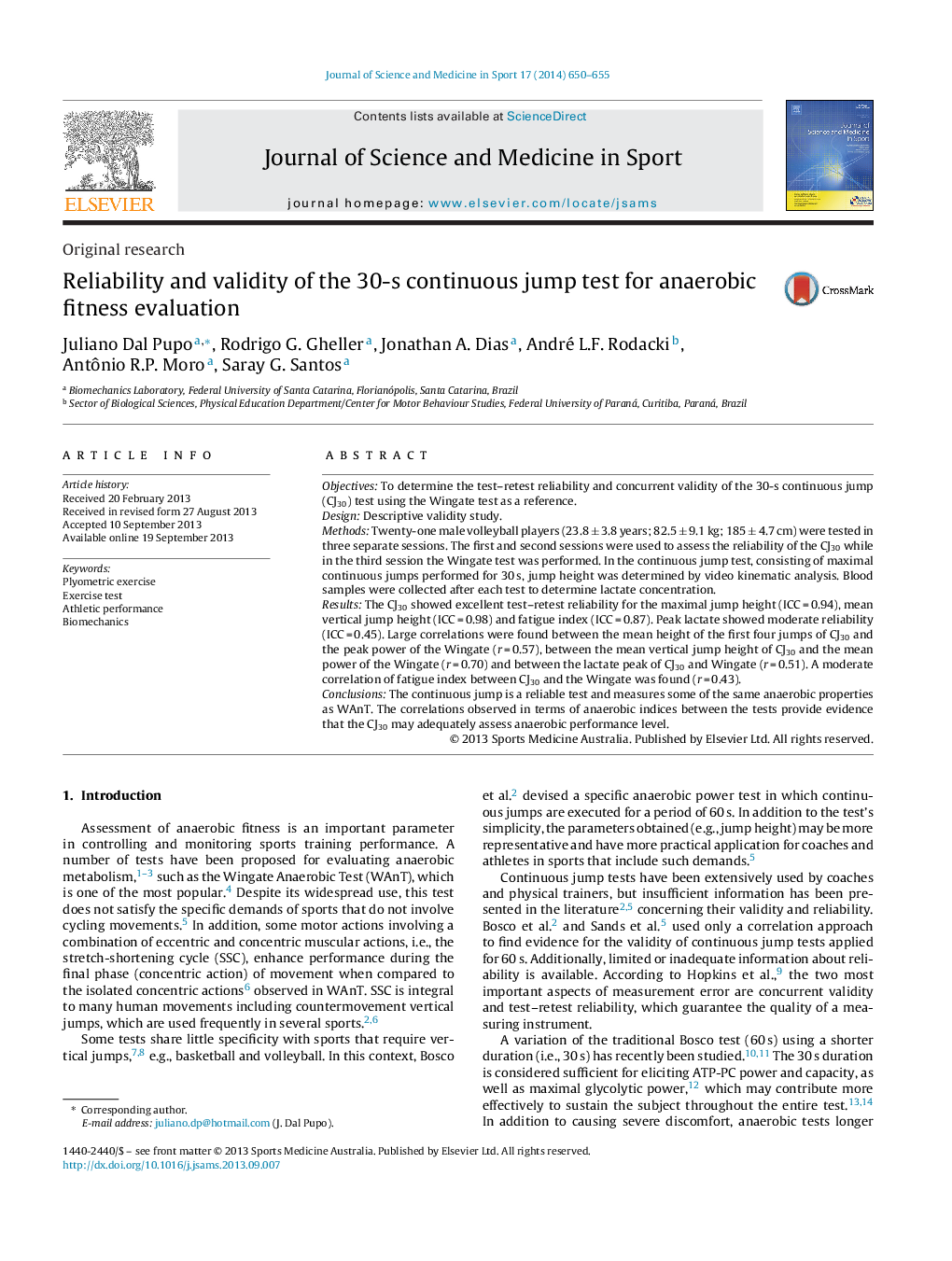| Article ID | Journal | Published Year | Pages | File Type |
|---|---|---|---|---|
| 2701421 | Journal of Science and Medicine in Sport | 2014 | 6 Pages |
ObjectivesTo determine the test–retest reliability and concurrent validity of the 30-s continuous jump (CJ30) test using the Wingate test as a reference.DesignDescriptive validity study.MethodsTwenty-one male volleyball players (23.8 ± 3.8 years; 82.5 ± 9.1 kg; 185 ± 4.7 cm) were tested in three separate sessions. The first and second sessions were used to assess the reliability of the CJ30 while in the third session the Wingate test was performed. In the continuous jump test, consisting of maximal continuous jumps performed for 30 s, jump height was determined by video kinematic analysis. Blood samples were collected after each test to determine lactate concentration.ResultsThe CJ30 showed excellent test–retest reliability for the maximal jump height (ICC = 0.94), mean vertical jump height (ICC = 0.98) and fatigue index (ICC = 0.87). Peak lactate showed moderate reliability (ICC = 0.45). Large correlations were found between the mean height of the first four jumps of CJ30 and the peak power of the Wingate (r = 0.57), between the mean vertical jump height of CJ30 and the mean power of the Wingate (r = 0.70) and between the lactate peak of CJ30 and Wingate (r = 0.51). A moderate correlation of fatigue index between CJ30 and the Wingate was found (r = 0.43).ConclusionsThe continuous jump is a reliable test and measures some of the same anaerobic properties as WAnT. The correlations observed in terms of anaerobic indices between the tests provide evidence that the CJ30 may adequately assess anaerobic performance level.
